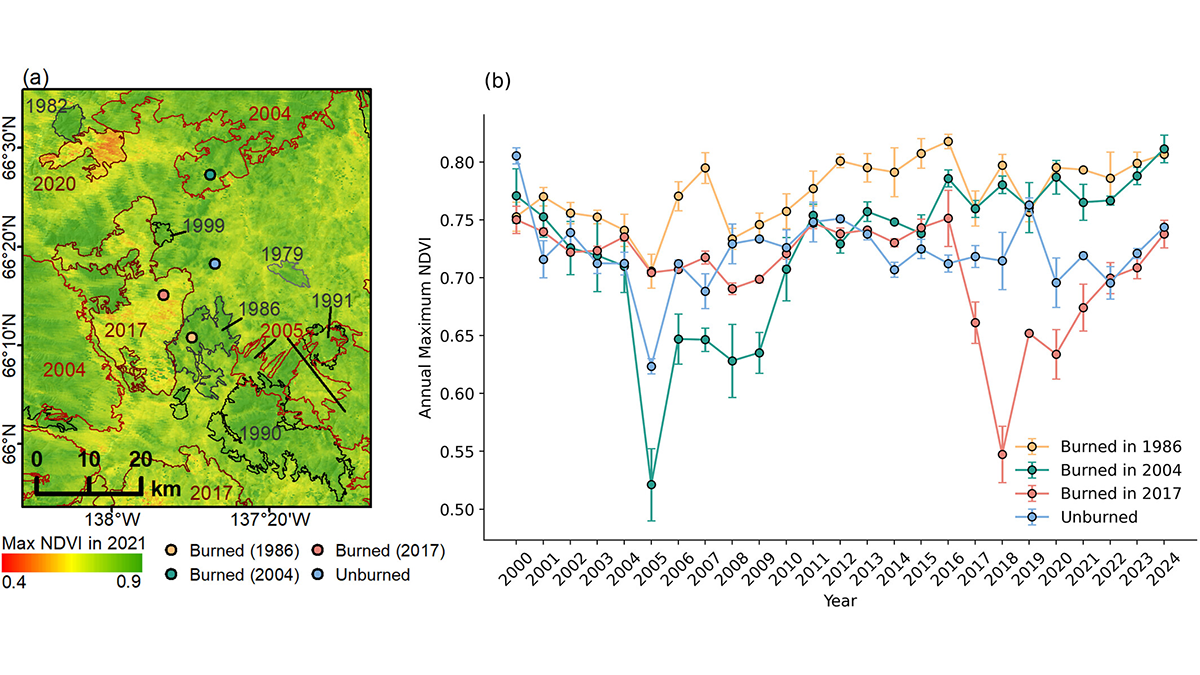Editors’ Highlights are summaries of recent papers by AGU’s journal editors.
Source: AGU Advances
Permafrost is considered a critical global component of the cryosphere given its climate-sensitive nature and its key geomorphological and ecosystem role. Permafrost is also affected by wildfires which may cause the crossing of a tipping point in cryospheric systems. In fact, wildfires may reduce vegetation, destroy organic layers, modify surface albedo, leading to active layer thickening and ground subsidence. Permafrost itself is subjected to long term deformation after wildfires, but this deformation is currently poorly understood.
Cao and Furuya [2025] use remote sensing to explore ground surface deformation signals across multiple fire scars in the past five decades in North Yukon. The authors find that post-permafrost evolution follows three distinct phases characterized by land subsidence soon after the event and final recovery of the permafrost over a 50-year timescale, which implies soil uplift. Such an uplift phase is rarely reported and is related to vegetation regeneration and soil greening after the fire. These provide thermal protection, suggesting a critical mechanism of permafrost recovery. These findings highlight the resilience of boreal-permafrost systems against wildfires, but continuous monitoring is needed as wildfire and climate change intensify.
Citation: Cao, Z., & Furuya, M. (2025). Decades-long evolution of post-fire permafrost deformation detected by InSAR: Insights from chronosequence in North Yukon. AGU Advances, 6, e2025AV001849. https://doi.org/10.1029/2025AV001849
—Alberto Montanari, Editor-in-Chief, AGU Advances


